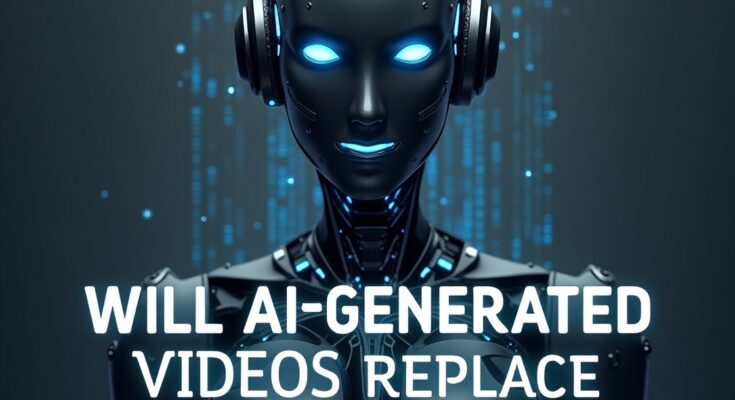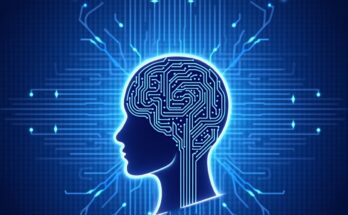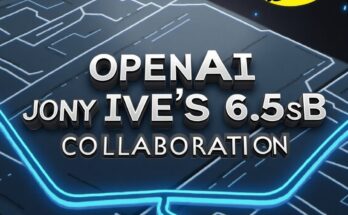Introduction: The Future of Video Creation Is Here
Artificial Intelligence (AI) has already transformed many creative fields — from writing and music to art and design. Now, it’s making a bold leap into the world of video creation. One of the most exciting developments in 2025 is Sora, a new AI-powered video generation tool from OpenAI, the company behind ChatGPT and DALL·E.
Sora can create realistic, cinematic videos from just text prompts — no cameras, actors, or complex editing software needed. This breakthrough raises an important question for digital content creators everywhere:
Will AI-generated videos like those from Sora replace YouTube creators?
In this article, we’ll explore what Sora is, how it works, and what it means for the future of video content creation. We’ll also discuss how creators can adapt and thrive in this rapidly changing landscape.
What Is Sora AI?
Sora is a text-to-video AI model developed by OpenAI, released in early 2025 as part of a limited preview. It takes descriptive text input and generates high-quality videos that can last up to a minute. This technology builds on OpenAI’s expertise with language and image generation models, combining these skills to produce moving visuals.
Key Features of Sora:
-
Text-to-video conversion: Simply type what you want to see, and Sora brings it to life.
-
Multi-scene video creation: Generate videos with multiple connected scenes for storytelling.
-
Realistic motion and objects: Handles complex visuals like moving cameras, objects, and natural environments.
-
Integration with other OpenAI tools: Works alongside ChatGPT and DALL·E for enhanced creativity.
This capability is revolutionary because it eliminates many traditional barriers to video production — equipment costs, shooting time, and technical skills.
How Does Sora Work?
At its core, Sora is trained on massive datasets combining videos, images, and text to understand how scenes evolve over time. When you provide a text prompt, it predicts the sequence of frames that best visualize the description.
Using Sora is simple:
-
Enter a detailed prompt (e.g., “A red sports car driving through a futuristic city at sunset”).
-
The AI generates a smooth video clip matching the prompt.
-
You can further refine or extend the video by adding more text or adjusting scenes.
This process usually takes seconds to minutes, depending on video length and complexity.
Potential Impact: Will Sora Replace YouTube Creators?
The answer is nuanced.
What Sora Can Replace or Automate:
-
Stock footage and B-roll: Businesses and creators can quickly generate visuals without purchasing expensive clips.
-
Simple explainer and promotional videos: Marketing agencies and freelancers can automate low-budget video projects.
-
Background animations: Video creators can use AI-generated clips as dynamic backdrops.
This will definitely reduce the need for some traditional video editing and stock footage services, saving time and costs.
What Sora Can’t Replace — At Least Not Yet:
-
Personal connection: YouTube creators thrive on their unique personality, voice, and authenticity.
-
Storytelling and expertise: Educational content, in-depth reviews, and tutorials require human insight and experience.
-
Live content and interactivity: Gaming streams, reaction videos, and live events rely on real-time engagement.
-
Emotional nuance: Humor, sarcasm, empathy — these are difficult for AI to replicate fully.
Creators who build genuine relationships with their audiences remain irreplaceable.
How Creators Can Benefit from Sora AI
Instead of fearing AI as a competitor, creators can embrace it as a powerful tool.
Ways to Leverage Sora:
-
Custom intros and transitions: Generate high-quality animated openings for your videos.
-
Visual storytelling: Add AI-generated scenes to enhance your narratives.
-
Faster production: Speed up editing by automating repetitive or time-consuming tasks.
-
Experimentation: Test creative ideas quickly without heavy investment.
Sora acts as an assistant, enabling creators to focus more on creativity and less on technical hurdles.
The Future of AI-Generated Video Content: Opportunities and Challenges
Opportunities
-
Democratization of video creation: More people can produce professional-quality videos, lowering entry barriers.
-
New content formats: AI can inspire formats that blend text, images, and video in innovative ways.
-
Faster turnaround: News, marketing, and educational sectors benefit from quicker video production.
Challenges
-
Content authenticity: Distinguishing human-made vs AI-made videos will become important.
-
Ethical concerns: Misuse for misinformation or deepfakes could rise.
-
Quality control: Saturation of AI-generated content might flood platforms with low-value videos.
Creators, platforms, and regulators will need to navigate these issues carefully.
What Does This Mean for Your Tech News Blog?
As someone covering tech news, including AI developments like Sora will keep your content fresh and relevant. Detailed, honest articles like this attract readers who want to understand the latest technology trends.
By providing insights into how AI tools impact creators and audiences, you position yourself as a trusted source — great for SEO and AdSense.
Final Thoughts: Adapt and Thrive
Sora AI by OpenAI isn’t here to replace YouTube creators overnight. Rather, it represents a new wave of tools that will change how videos are made. Those creators who adapt and use AI wisely will gain a competitive edge.
The evolution of content creation is ongoing, and Sora is just one step forward. Embracing this technology with creativity and ethics will be key to success in 2025 and beyond.
SEO Meta Title and Description
Meta Title:
Sora AI by OpenAI: Will AI-Generated Videos Replace YouTube Creators in 2025?
Meta Description:
Discover how OpenAI’s Sora AI is revolutionizing video creation with text-to-video technology. Learn whether AI-generated videos will replace YouTube creators and how creators can adapt in 2025.



